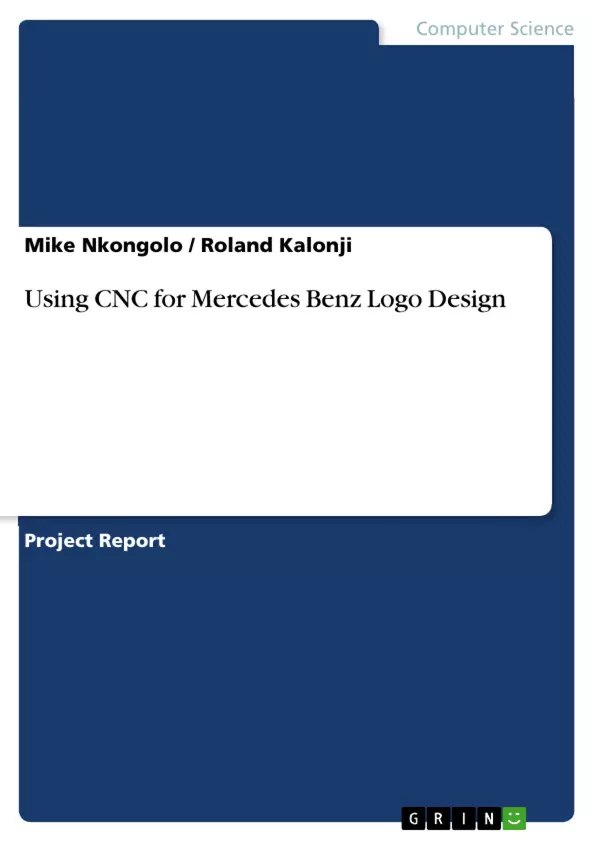This report covers the work that was carried out by a group of researchers on CNC (Computer Numerical Control) programming and machining. The task was to choose and design a creative item to be machined using CNC machining, which then required to write a code using CNC language. Prior to the machining process, we did a Computer Aided Design (CAD) drawing of the Mercedes Benz logo. The logo was further modified with the final model drawn using Auto Desk Inventor. We used foam for our model and a 10 diameter end mill tool.
The main problem that was experienced was the cutting time; the model took longer to be complete. The cutting time was affected by the complexity of the design, chosen tool size and the cutting technique. We learnt from the demonstration that the shorter the constructed code the more robust it is, using a bigger tool is more efficient in terms of saving energy and time, and that if the code is correct the CNC machine model becomes identical to that of the product Design.
Inhaltsverzeichnis (Table of Contents)
- Abstract
- Acknowledgements
- Declaration
- 1 Introduction
- 1.1 Coordinate system
- 1.2 Advantages and disadvantages of CNC machining
- 1.2.1 Advantages
- 1.2.2 Disadvantages
- 1.3 Motivation.
- 1.4 Objectives
- 1.5 PRODUCT REQUIREMENT SPECIFICATIONS
- 1.5.1 Requirements
- 1.6 Concept
- 1.6.1 Concept Motivation.
- 1.7 Design Modification.
- 1.8 3D drawing
- 1.8.1 Engineering drawing
- 1.8.2 G - Code
- 1.9 Methodology
- 1.9.1 Procedure and Modelling.
- 1.9.2 Programming
- 1.9.3 Machining
- 1.9.4 Precautions
- 1.10 OBSERVATIONS AND RESULTS
- 1.11 Discussion
- 1.12 Conclusion.
- Appendices
Zielsetzung und Themenschwerpunkte (Objectives and Key Themes)
This report explores the process of designing and machining a creative item using CNC (Computer Numerical Control) technology. The specific project focuses on creating a three-dimensional model of the Mercedes Benz logo using foam and a CNC milling machine.
- The advantages and disadvantages of CNC machining
- The design and modification process of the Mercedes Benz logo
- The development of G-code for CNC machining
- The practical challenges and lessons learned during the machining process
- The importance of accurate code development and tool selection in achieving desired results
Zusammenfassung der Kapitel (Chapter Summaries)
The introduction provides an overview of CNC machining, including its coordinate system and advantages and disadvantages. It outlines the motivation and objectives of the project, as well as the specific requirements and design concept for the Mercedes Benz logo. The chapter also details the design modification process, 3D drawing techniques, and the methodology employed in the project, encompassing modeling, programming, machining, and safety precautions.
Chapter 1.9 delves into the methodology employed in the project, explaining the procedure and modeling techniques used. The chapter further explores the programming and machining processes, highlighting the importance of accurate code development and proper tool selection. The chapter concludes by emphasizing the need for safety precautions throughout the machining process.
Schlüsselwörter (Keywords)
This report focuses on the following key terms: CNC machining, G-code programming, Computer Aided Design (CAD), Mercedes Benz logo, 3D modeling, machining process, tool selection, design modification, and safety precautions.
- Quote paper
- Mike Nkongolo (Author), Roland Kalonji (Author), 2017, Using CNC for Mercedes Benz Logo Design, Munich, GRIN Verlag, https://www.grin.com/document/379409



